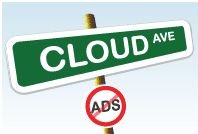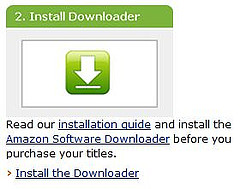Check out the Daily WTF for a relevant post 
(Cross-posted @ CloudAve )
Connecting the dots ...


 (OK, I sinned. Mea Culpa. I’ve just cross-posted an entire article, which is not the best behavior. But it’s not every day that I launch a new group blog – so consider this my shameless self-plug, and please subscribe to the feed.
(OK, I sinned. Mea Culpa. I’ve just cross-posted an entire article, which is not the best behavior. But it’s not every day that I launch a new group blog – so consider this my shameless self-plug, and please subscribe to the feed. )
)
We must be a crazy bunch on a suicide mission. Why else would we launch a new blog focused on Cloud Computing and Business, when it’s just a fad that will collapse in two years?
Harry Debes, CEO of Lawson Software is a respected Enterprise Software industry veteran, but I’m afraid for all his achievements he’ll go down in history as the man who grabbed headlines with a fatally wrong call. Of course not all wrong calls hurt one’s reputation: IBM’s Thomas Watson is still an industry legend despite the famous quote incorrectly attributed to him:
” I think there is a world market for maybe five computers“
The small difference is that what Thomas Watson could not fathom in 1943 ended up putting IBM on an amazing growth trajectory, while Harry Debes’s view may just turn out to be fatal for Lawson – or to quote my Enterprise Irregular friend, Vinnie Mirchandani:
“That’s what American and Delta said about SW. And GM and Ford said about Japanese cars. And Sears and Wards said about WalMart.”
Another quote by Vinnie, closer to our industry:
“Dun & Bradstreet, which GEAC acquired for a song, was one of the most spectacular slides in the software market. In less than 5 years it went from dominant position to a distress sale as it missed the client/server wave in early 90s.”
I’ve seen that one close, fortunately for me from SAP’s side – the winner in that round. We’re witnessing another tidal wave now, the shift to Cloud Computing. It won’t happen overnight, but those who completely ignore it will vanish. Some of my fellow Enterprise Irregulars elaborate more:
I can live with that… it’s only starting… so we’re not a suicidal bunch, after all. But thank you, Harry Debes, for sparking a great discussion.
But thank you, Harry Debes, for sparking a great discussion.
If you read just the few articles I’ve quoted above, you get a fairly good picture of the many benefits the Software as a Service model offers. Let me add a few of my personal favorites:
We’ll be writing about these and more. I’m a “business application guy”, so I mostly talk about SaaS – but our name is Cloud Avenue, not SaaS Avenue, for good reason: fellow blogger Krish will talk about it soon. By the way, Krish and I got to know each other through our blogs – just like my fellow Editor, Ben Kepes, and just about all other contributors. We also have our CloudLab – for product / service reviews. Yes, we will report on products, but do not strive to be a mini-TechCrunch: we have no intention to report about everything new. We’re not a news-blog. We’d rather sit back, analyze a market, find key players, then produce a series of reviews / comparative analysis. Quality before quantity or urgency.
We’re believers in Cloud Computing, but not over-zealous cheerleaders. Just as I’m finishing this post, another SaaS debate erupted, which prompted Anshu Sharma to note: “there must be a Sky is Falling Support Group“. The really notable part of the Cloud-Filled Debate @Forbes is Nick Carr’s responses: not because of the Big Switch author’s unquestionable “cloud-bias”, but because of how realistic he is:
Forbes.com: Is cloud computing over-hyped?
Nicholas Carr: At the moment, yes, and that’s typical for technological advances.What’s your imagined time line of the adoption of cloud computing? Will it take years? Decades?
If you’re talking about big companies, I would say it will be a slow, steady process lasting maybe 15 to 20 years.On what Gartner Research analysts call “the cycle of hype and gloom,” where do you think cloud computing is currently positioned?
It’s definitely near the peak of its hype. The doom period, when the media and IT managers realize the challenges ahead, is likely coming soon. But regardless of hype or gloom, the technology will only keep progressing.
Overhyped, slow process, doom is coming… has Nick Carr switched sides? No, he is just being realistic – and that’s what we need to do here @CloudAve, too. We will talk about integration problems, security issues, privacy concerns, even legal ramifications – many of these I don’t claim to know much about, which is why it’s great to have a diverse team of authors with complementary areas of expertise. And our door is never closed: we welcome guest posts, and who knows, you may feel inclined to join us as as a regular writer…
Finally, we could not afford to bring you CloudAve without sponsorship. My regular readers know I’ve been an advisor to Zoho for years now – I’ve found them to be a showcase for a lot of my ideals. Zoho stepped up as exclusive sponsor of CloudAve. This does not make us a Zoho PR outlet, in fact they can expect less coverage here than they got on my personal blog. We enjoy complete editorial independence.
What we do not have, and will not have is any form of advertising. None of those flashy banners, boxes, making the site close to unreadable. Just pure content. And since we are not dependent on page views, we can afford to offer our content under a Creative Commons licence. Yes, it’s all yours, take it – just don’t forget attribution.
So here we are – welcome to CloudAve. We hope you will follow us. And once again, thank you, Harry, for all the attention to Cloud Computing.
 P.S. The CloudAve platform is not exactly in nice order yet. It’s work-in-progress.
P.S. The CloudAve platform is not exactly in nice order yet. It’s work-in-progress.
So for now, all I can do is apologize for the shabby appearance, like I did at a previous move – that one turned out quite well, didn’t it?
And talk about move – I am not abandoning this blog either, so I hope you continue to follow me both here and on CloudAve.

I am a big fan of Software as a Service, but it frustrates the hell out of me to see industry pundits over-hype it without really understanding it. Here are 3 killer (in the bad sense) half-truths about SaaS:
1 – SaaS is simpler, easier to implement than On-premise software (see update at the bottom)
2 – SaaS is for the SMB market
3 – SaaS is bought, not sold, it’s the end of Enterprise Sales
Let’s examine them in detail:
1 – SaaS is simpler, easier to implement than On-premise software.
The only part that’s absolutely true is the technical installation, which the customer no longer has to worry about with SaaS. But we all know that this is a fraction of a typical implementation. Implementations are all about business process and training, hence the difficulty / duration / cost of an implementation depends on the complexity of business and the size of the organization – these two tend to correlate with each other.
It just so happens that all SaaS solutions so far have started (and many stay) at the SMB level, so they are simpler not by virtue of being SaaS but by their target market’s needs.
2 – SaaS is for the SMB market
Yes, traditionally all SaaS started with Small Businesses, but that does not mean it may not move upstream. Salesforce.com and several HCM applications have proven technical scalability, but they offer partial / departmental functionality.
I am a strong believer that in 4-5 years most software developed will be SaaS, and that in 10 years it will be the predominant method of “consuming” software by large enterprises – but I can’t prove it. There’s no empirical evidence, since there has not been any Integrated Enterprise SaaS available so far. The closest to it is NetSuite today (but it’s still SMB focused), and SAP’s Business ByDesign tomorrow. In fact despite SAP’s official positioning, driven by market focus and current limitations (functional and infrastructure), I believe that SAP will use BBD to learn the SaaS game – i.e. BBD will be a test bed for a future Enterprise SaaS offering. But we’re not there yet.
(longer discussion here)
3 – SaaS is bought, not sold, it’s the end of Enterprise Sales
Hey, I’ve said this myself, so it must be true (?). Well, it depends on the position of the sun, the constellation of the stars, and several other factors, but mostly the first two we’ve just covered.
SaaS for very small business: that’s the clear-cut lab case for the click-to buy pull model to work. In fact in this respect (sales model) I believe the business size is the no.1 determinator. Some solutions will have to be configured and may even require pre-sales business process consulting. This inflexion point will clearly be higher for functionally simpler solutions, like CRM and lower for integrated business management systems, like NetSuite or SAP’s Business ByDesign.
Once you reach that inflexion point, you’re in a more interactive, lengthier sales process, and that’s typically face to face. At least that’s what we’re conditioned to: but it does not have to be that way. That will be the subject of another post – to come soon.
Update: Ben Kepes challenged #1 on his blog, and to some extent I have to agree. My post here is continuation of a discussion we started at the virtual SAP Marketing Community Meeting, and my mind-set was still business process software, e.g. CRM, ERP..etc, but I forgot to specify that. Instead of replicating the argument, why don’t you read my response to his response at Ben’s place.

 Zoho, best known for their Web-based Productivity (Office+) Suite today released Zoho People, a feature-rich On-Demand HRMS – Human Resources Management System. For the product introduction please read my previous post, while here I focus on business analysis, specifically on what this move means to software sales in general.
Zoho, best known for their Web-based Productivity (Office+) Suite today released Zoho People, a feature-rich On-Demand HRMS – Human Resources Management System. For the product introduction please read my previous post, while here I focus on business analysis, specifically on what this move means to software sales in general.
Today’s product announcement signifies a departure from what Zoho has been known for so far, in a number of ways. Their primary reputation is being the best Web-based Office / Productivity Suite provider – People is clearly a process-driven, transactional system with “enterprisey” features: organization levels, work-flow, permissions…etc.
It’s not an entirely new field for Zoho though, as their CRM solution has been gaining traction for years now – both in terms of new customers as well as converts from the market leader. (See chart with full list of Productivity and Business Apps). As a matter of fact, I’ve often stated calling it CRM is an understatement: with Sales Order Management, Procurement, Inventory Management, Invoicing it’s really more of a mini-ERP. Add to it Accounting and HCM and Zoho can come up with an unparalleled Small Business Suite, which includes the productivity suite (what we now consider the Office Suite) and all process-driven, transactional systems: something like NetSuite + Microsoft, targeted at SMB’s, perfectly rhyming with Zoho’s stated objective of becoming the outsourced IT for small businesses.
Except… well, Zoho People is not a small business system. All you have to do is look at some of the organizational setup, or processes, like holiday, training, leave requests, company policies to realize that this system is ideally suitable for organizations with a few hundred employees and more. (The “M” in SMB, whereas most of Zoho’s focus has been on the “S” until now). So it’s a departure from Zoho’s traditional target market, and by its very nature it’s not a system individuals or small groups would just start to use in an ad-hoc manner. It’s a system to be introduced by HR for the entire company.
Bringing an enterprise system to the market typically requires a different approach, a coordinated marketing and sales effort, supplemented by consulting and support – i.e. all the extra weight that makes enterprise software “big and fat”. Yet Zoho just throws it out in the open, like they did with Writer, Sheet or any one of the dozen or so productivity tools. They have no clue how to market enterprise software! – one might say… and do they, really?
Simply announcing enterprise software without marketing and sales is certainly a risky proposition. Any startup that does with their main product is doomed to fail. Yet Zoho can afford an experiment. The new HCM system is just one product in their portfolio, in fact the entire Zoho portfolio is just a big experiment of the parent company, privately held and profitable Adventnet. CEO Sridhar Vembu repeatedly stated his mission is to commoditize software, delivering it to large masses at previously unseen prices.
There’s all this talk about how SaaS changes the economics of Software – pull vs push process, try-and-buy vs. the expensive enterprise sales process; but it mostly refers to the SMB space. The try-and-buy, self-serve model is almost unheard of amongst larger organizations and more complex software. It traditionally needs more cajoling and hand-holding. But why not break away from tradition? Why should all innovation stay on the product side? Zoho goes the extra mile to make the new system more “consumable”: screenshot tours, demo videos abound. Of course disruptive pricing does not hurt, either.
If Zoho People fails to gain traction, so be it: the company will likely focus on their main avenue of becoming the IT provider for SMB’s, integrate features from People into Zoho Business and CRM, and figure out how to crack the HCM market later. If, however it starts gaining traction, it’s a good signal to the entire SaaS industry: an indication that transparency, online information and help works, the try-and-buy model may just be feasible even with larger organizations, which, for the first time will buy Software as a Service instead of being sold to by pushy enterprise sales teams.
(Disclaimer: I am an Advisor for Zoho.)
Related posts: Between the Lines, Zoho Blogs, Deal Architect, Centernetworks, Wired, SmoothSpan Blog, GeekZone, Webware, Venturebeat, Web Worker Daily, TechCrunch, Business Two Zero, Irregular Enterprise.

Tax-time is soon upon us, and for millions of Americans that means buying TurboTax again. Fastest way to get it? Download from Intuit. Cheapest way to get it? Buy at Costco.
Not anymore. This year the fastest AND cheapest way is to download it from Amazon. Yes, Amazon entered the software download business, although initially the only available products are the different TurboTax flavors.
The traditional, box-sale page points to the download version, claiming you will “save time and money by downloading” software. Well, not quite. The downloadable version of each product is priced to match the boxed product+shipping charges. This is a missed opportunity, there are obvious savings from not having to manufacture, ship and store a tangible product, so they could afford to create financial incentives to move more customers to the download option. (Note: “they” means both Amazon and TurboTax maker Intuit, which also offers the box and download at identical prices.)
 There’s one thing I really, really don’t like about this new Amazon service: before you can purchase anything, you need to download and install the “Amazon Downloader”, which in turn will download and install the actual product. Now, I don’t know about you, but I certainly am not buying software frequently enough to justify the need for a client, whatever benefits(?) this approach may offer. And of course once you install software, you know you’re in for a lifetime of endless updates…
There’s one thing I really, really don’t like about this new Amazon service: before you can purchase anything, you need to download and install the “Amazon Downloader”, which in turn will download and install the actual product. Now, I don’t know about you, but I certainly am not buying software frequently enough to justify the need for a client, whatever benefits(?) this approach may offer. And of course once you install software, you know you’re in for a lifetime of endless updates…
If you ever need to download your purchased software again, it’s available under a new section called “Your Media Library.” As Mashable’s Adam Hirsch discovered, this is a lot more than just a listing of your digital purchases: you can list all purchases from Amazon and other sources, adding your items by simply scanning their barcode through your webcam, Amazon will convert and import the information automatically . There are a number of ways to share all this with friends, start discussions, tag items, subscribe to your friends’ collections via RSS, and follow what’s hot at any time.
If you think this is all similar to FaceBook’s Beacon, that’s because it is. With a significant difference: Amazon’s version is entirely opt-in.
Related posts: Download Squad, Mashable, Windows Connected, Web Worker Daily.

Publisher / Editor of CloudAve and Enterprise Irregulars.
I do most of my business blogging there, with occasional asides here. More...
Copyright © 2025 · Mindstream Child Theme on Genesis Framework · WordPress · Log in
Recent Comments